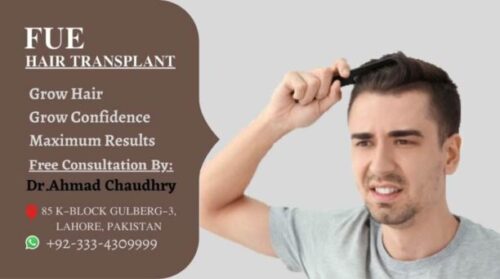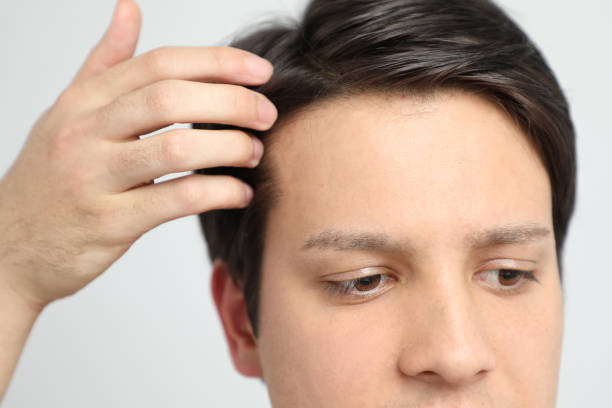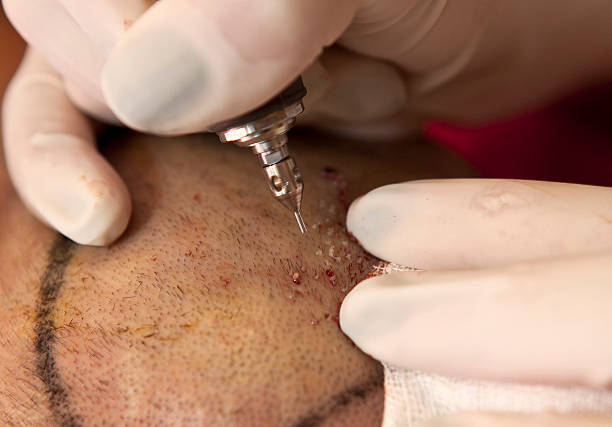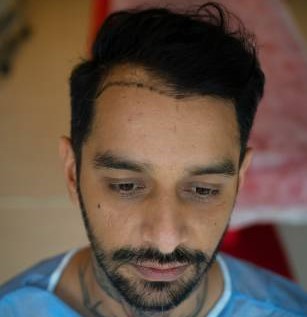Hair transplant surgery in young patient is performed for the same underlying reasons that lead to baldness in old age. Balding was commonly associated with old age, however, the number of young people getting bald is increasing in the developed countries. Several young patients are consulting dermatologists to cope up with their falling hairs. Among various reasons , autoimmune diseases, thyroid disorders, hormonal changes, diet and stress are the leading factors contributing to the early balding condition. According to studies, a reduced consumption of zinc, vitamin D and proteins in this age group have triggered the issue. Usually, hair restoration surgery in young patients is not a preferred option. The patients are advised to take good care of diet and develop healthy habits to reverse the loss. Eliminating depression through meditation and therapy can be beneficial. Stress related thinning is due to disturbed life cycle which leads them to enter into catagen phase prematurely. Moreover, stress leads to the excessive secretion of cortisol which can cause hormonal disturbances. It has also been found out that the younger generation is more prone to hair loss due to stress than old people.
How young can you be to get a hair transplant?
It is not recommended to get a hair restoration surgery in early twenties; because the hair fall is reversible in this stage of life and it can be stopped by getting into non-invasive procedures and following a medication plan. In order to know what you should do to treat your thinning and receding hairline, the best way is to consult a dermatologist. Most of the factors leading to thinning of scalp in young age can be corrected without the need of a transplant. If it is as a result of stress or nutritional deficiencies, surgical procedure cannot even fix the issue. Similarly, autoimmune diseases need to be addressed first if the problem is a consequence of any, instead of going to a hair restoration surgery. A hair specialist will find out the exact cause by taking a detailed medical and family history. Sometimes tests are recommended in order to diagnose the root cause. Your dermatologist might suggest you for a scalp biopsy or blood test in order to get to the main cause. An invasive procedure is the preferred option when you want instant results or none of the non-surgical treatments have worked for you.
Can I get a hair transplant at 25?
People in the starting years of twenties are not a good candidate for a surgical intervention. Though the issue is a common phenomenon, only about two third of the population experience it before their 30s. It hits the older population at a greater percentage, 85%, when the people reach their fifties. Only in worst cases, one can experience hair loss in their early 20s. Experiencing bald spots at a young age can have an adverse impact on physical appearance, self-esteem and lack of self-confidence. This may lead to the mindset of going for a hair transplant at an early age, however, according to experts; this is not the most preferred option. This is because of the fact that in a surgical procedure, a surgeon needs to determine the exact pattern of baldness in order to figure out the areas that can support hair growth when taken out from a donor area and implanted in a recipient’s area. And the balding pattern is not well predictable at this early age. Incorrect selection of a donor site can lead to failure of procedure or unsatisfactory results.
Can I get a hair transplant at 21?
Experiencing signs of baldness at such an early age can be disturbing. It is possible to undergo a surgical procedure and available at many clinics but this is not practiced often. The main reason is that it leads to unfortunate results in many cases, due to the limited supply of donor follicles on your head. If one goes for hair restoration at such an early age, he may exhaust off his supply of healthy follicles that can support the growth when implanted from a donor area to a recipient area. If shedding of the strands continued after a transplant and you might need another restoration at the age of 40, you might run short of donor follicles in this case. Moreover, getting through an invasive treatment at 20s will lead to tufts of robust hairs at the temple area surrounded by a large bald spot which may give unnatural and ugly effects on appearance. Therefore, in order to get desirable results, you might need to be patient for a time interval so that you get satisfactory outcomes.
At what age can you have a hair transplant?
As concerned by leading specialists, the best age for a surgery is 25 years and above. This is the right time for getting any of the surgical procedures as the baldness sets in. If it is performed at a young age, when the hair loss is still progressing, the desire to get a natural look cannot be achieved. The implanted hairs start growing with full strength while the others in the surrounding keeps falling or getting thinner. This leads to more prominent bald spots and unnatural look. That’s why most of the younger patients are asked to shift towards a healthy lifestyle and well balanced diet. Protein and vitamin supplements are added in the regimen to help in growth. FDA approved medications for increased growth includes minoxidil and finasteride which can be prescribed at an early age to treat baldness. The ideal candidate is the one who have experienced gradual hair loss. However, people in their early twenties can go for a surgical treatment after proper consultation on risk to benefit ratio, by an experienced and skilled expert having proper qualification and research on performing hair transplant in younger patients with successful results. To get an appointment & free check up call or WhatsApp +92-333-430-9999
Get same day reply | Write us or WhatsApp | +92-333-430-9999




